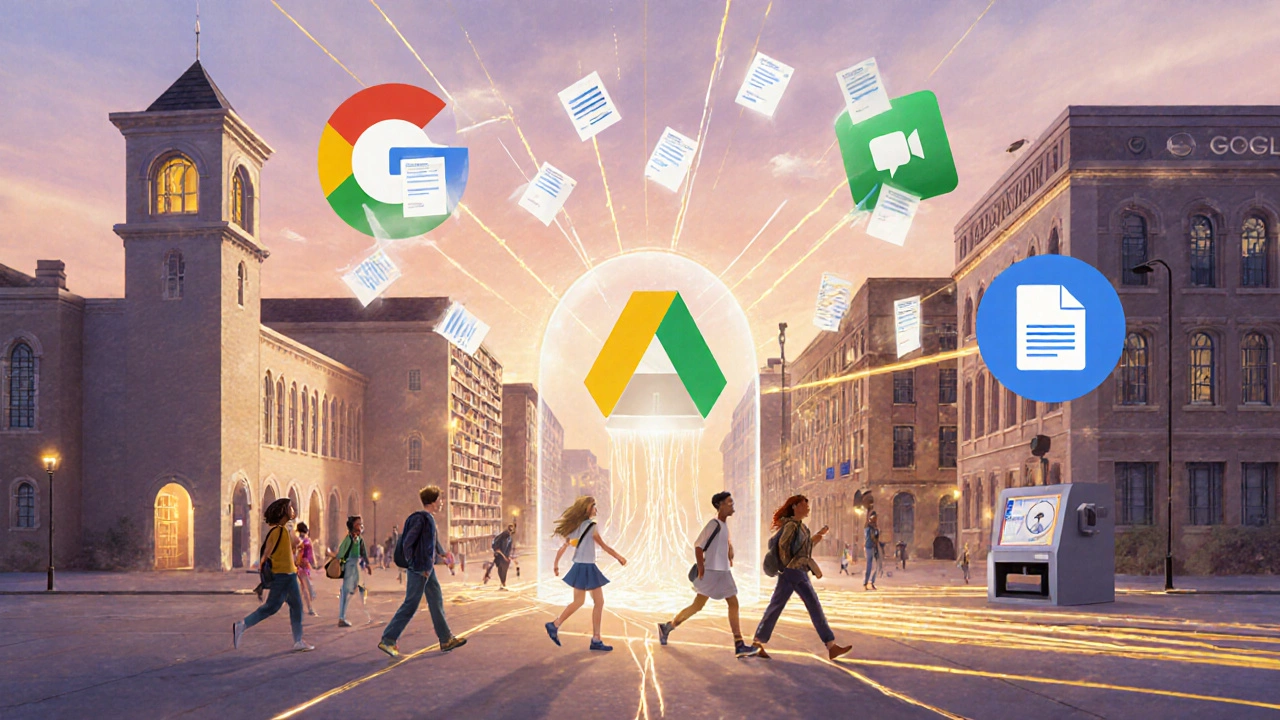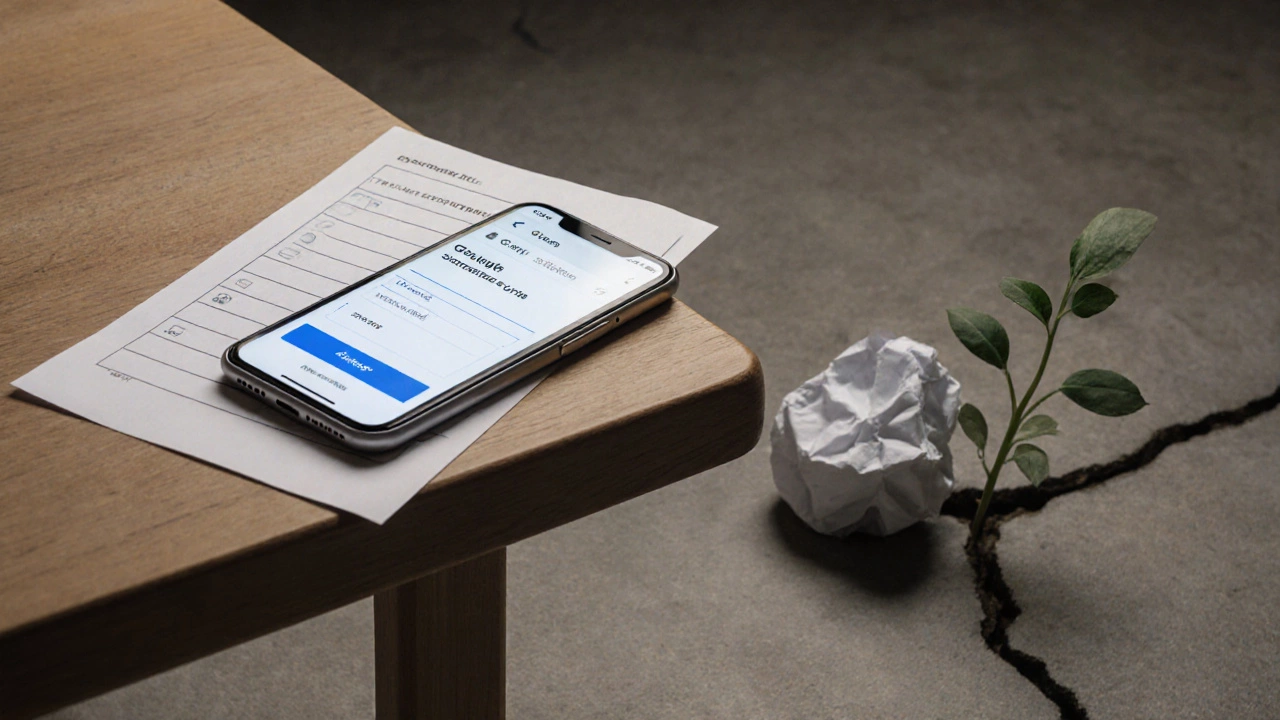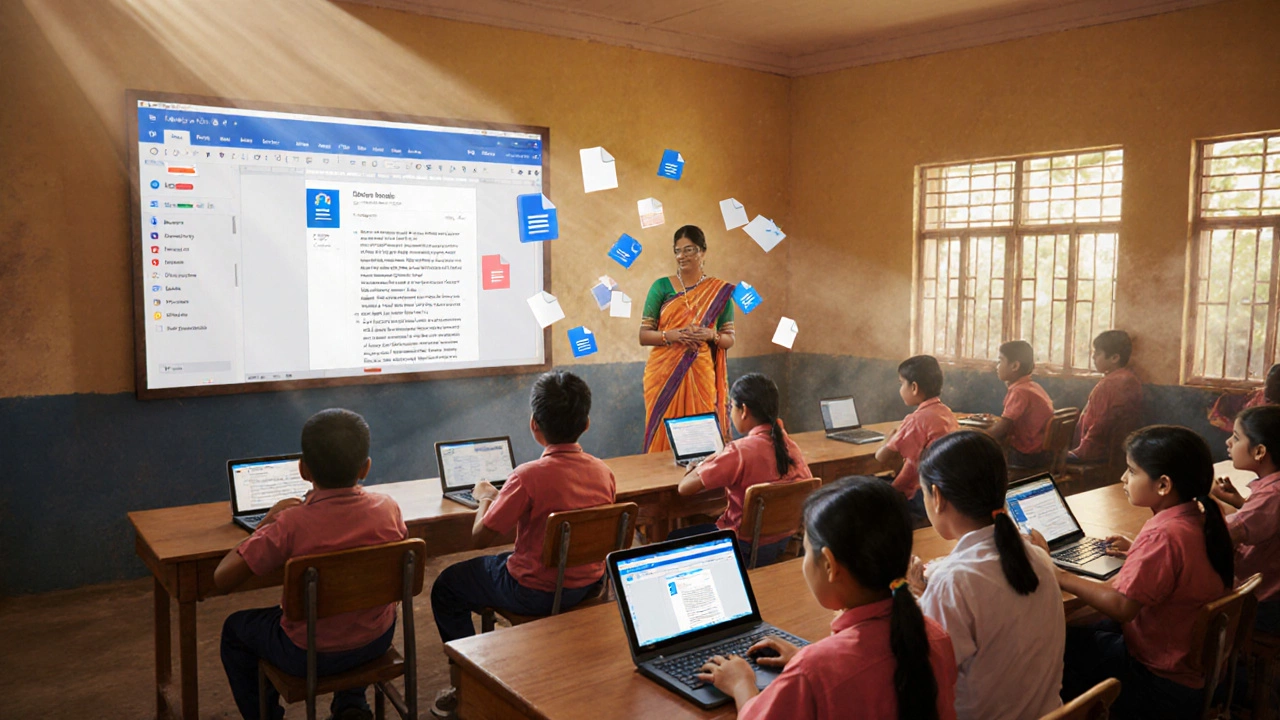Education Platform Comparison Tool
Find the best learning platform for your needs
This tool compares Google Workspace for Education with popular alternatives based on your specific priorities. Select features that matter most to you to see which platform aligns with your needs.
Select your top priorities
Results will show
Select at least one feature to see your personalized comparison
Your Personalized Comparison
Google Workspace
Free for schools
Moodle
Open-source
Canvas
Paid per student
Blackboard
Paid per student
Based on your selected priorities, Google Workspace for Education shows the strongest alignment with your needs. It offers a complete, integrated platform that's free for schools and works seamlessly across devices.
When you think of Google, you probably think of search. Maybe Gmail, YouTube, or Maps. But if you’re using Google to teach, learn, or manage assignments, you’re already on a digital platform. And yes - Google is a digital platform. Not just a search engine. Not just a tech giant. It’s a full-stack learning environment that millions of students and teachers use every day.
What Makes Something a Digital Platform?
A digital platform isn’t just one app. It’s a system that connects users, tools, and data to let people do things together. Think of it like a town square with shops, post offices, schools, and buses - all working in the same space. Google offers all of that for learning.Google Classroom? That’s the school bell and the attendance register. Google Drive? That’s the library and the locker room. Google Meet? That’s the classroom door you walk through from home. And it’s all linked. You log in once, and everything talks to everything else.
Compare that to a standalone app like Kahoot! or Quizlet. They do one thing well. Google does dozens - and they all work together. That’s the definition of a platform.
Google’s Learning Tools: A Built-In Ecosystem
Google doesn’t just offer apps. It offers a learning stack. Here’s what’s actually inside:- Google Classroom: Teachers create assignments, post announcements, and grade work. Students submit files, ask questions, and get feedback - all in one place.
- Google Drive: Stores every document, presentation, and spreadsheet. No more emailing files. No more lost USB drives.
- Google Docs, Sheets, Slides: Real-time collaboration. Two students editing the same essay? One teacher grading it live? That’s normal here.
- Google Meet: Video classes, parent-teacher meetings, group study sessions. Works on phones, tablets, or old laptops.
- Google Forms: Quizzes, surveys, feedback collection. Teachers make a quiz in 2 minutes. Students take it. Grades auto-calculate.
- Google Sites: Students build digital portfolios. Teachers create course hubs. No coding needed.
These aren’t random tools. They’re parts of a single system designed for education. And it’s free for schools. No subscriptions. No credit cards. Just sign up with a school email and you’re in.
Who Uses Google for Learning?
More than 170 million students and educators use Google’s education tools worldwide. In New Zealand, over 80% of public schools use Google Classroom as their main learning management system. Why? Because it just works.At a rural school in Hawke’s Bay, teachers use Google Forms to send home weekly reading logs. Parents fill them out on their phones. No printing. No faxing. No missed deadlines.
In Auckland, a high school runs its entire Year 11 science course through Google Sites. Students build their own project pages. Teachers leave voice comments. Parents log in to see progress.
This isn’t tech hype. It’s daily reality. And it’s not limited to schools. Universities use Google Drive for group research. Adult learners use YouTube tutorials to upskill. People in remote areas access online courses through Google Search.

How Is Google Different From Other E-Learning Platforms?
Let’s compare Google to other platforms people use for learning:| Feature | Google Workspace for Education | Moodle | Canvas | Blackboard |
|---|---|---|---|---|
| Cost for schools | Free | Free (open-source), but needs IT setup | Paid (per student) | Paid (per student) |
| Mobile app quality | Excellent - works on any phone | Clunky, outdated interface | Good, but limited features | Poor on mobile |
| Real-time collaboration | Yes - Docs, Sheets, Slides | No | Partial | No |
| Integration with other tools | Native - Drive, Meet, Forms, Calendar | Requires plugins | Some integrations | Complex setup |
| Accessibility | High - works on low-end devices | Low - needs good internet and hardware | Moderate | Low |
Google wins on simplicity and access. You don’t need a tech team. You don’t need to train staff for weeks. A teacher can set up a class in 10 minutes. A student can join from a $50 tablet.
It’s Not Perfect - But It’s the Most Used for a Reason
Sure, Google isn’t flawless. Privacy concerns? Yes, some parents worry about data. No offline mode for all tools? True. Sometimes the interface feels cluttered? Happens.But here’s what matters: it’s the platform that actually gets used. Not because it’s the fanciest. Not because it’s the most secure. But because it’s the easiest to start with - and hardest to quit.
When a teacher moves from a paper-based system to Google Classroom, their workload drops by 30% in the first month. That’s not marketing. That’s a 2024 study from the University of Auckland’s Centre for Educational Research.
Students report feeling less stressed. Why? Because they know where to find everything. No more digging through folders. No more asking, “Where’s the assignment?”

Is Google the Only Digital Platform for Learning?
No. But it’s the only one that’s free, global, and built for real people - not just IT departments.Platforms like Microsoft Teams for Education or Apple Classroom exist. But they’re tied to specific devices. Google works on Chromebooks, iPhones, Android phones, Windows PCs, and even library computers.
And it’s not just about tools. It’s about culture. Google’s platform is open. Anyone can join. Anyone can share. Anyone can learn. That’s why it’s become the default for schools, NGOs, and even home learners.
What You Can Do Today
If you’re a student: Go to classroom.google.com. Sign in with your school email. See what assignments are due. Join a class. Try making a document with a friend live.If you’re a teacher: Make a Google Form quiz. Send it to your class. Watch how fast it gets filled out. Then check the results. No grading needed.
If you’re a parent: Ask your child to show you their Google Classroom. You’ll see their progress. You’ll see their work. You won’t need to wait for a report card.
You don’t need to be a tech expert. You just need to start.
Is Google Classroom the same as Google as a digital platform?
Google Classroom is just one part of Google’s larger learning platform. The full platform includes Drive, Meet, Docs, Forms, Sites, and more - all connected. Classroom is the hub, but the real power comes from how everything else works together.
Do I need a Google account to use Google for learning?
Yes - but you don’t need to sign up yourself. If you’re a student or teacher, your school usually gives you a free Google Workspace account with your school email. Personal Gmail accounts can also be used, but schools prefer managed accounts for privacy and control.
Can Google replace an LMS like Moodle or Canvas?
For most schools - yes. Google’s tools cover the core needs: assignments, grading, communication, collaboration, and file storage. Larger institutions with complex requirements (like accreditation tracking or advanced analytics) might still use Moodle or Canvas. But for 90% of classrooms, Google does more than enough.
Is Google safe for kids to use in school?
Schools that use Google Workspace for Education get extra privacy controls. They can turn off ads, limit sharing, and control who can access files. Google doesn’t use student data for advertising. Many countries, including New Zealand, have strict rules that schools follow. Parents can ask their school for their privacy policy.
Can I use Google for self-study or homeschooling?
Absolutely. You can create a personal Google Classroom using a personal Gmail account. Use Google Drive to organize notes, Google Forms to test yourself, YouTube for video lessons, and Google Meet to join study groups. It’s free, flexible, and works anywhere with internet.
Final Thought: It’s Not About Google - It’s About Access
The real question isn’t whether Google is a digital platform. It’s whether learning should be locked behind paywalls, complex logins, or expensive software.Google’s platform doesn’t care if you’re in Wellington, a village in Nepal, or a refugee camp in Kenya. If you have a phone and a Wi-Fi signal, you can learn. That’s why it’s not just a tool. It’s a bridge.

